Search Images
Browse Content (p. 1631)
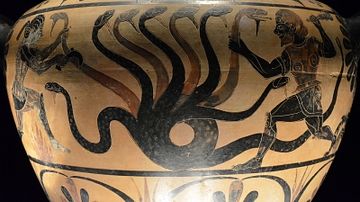
Image
Herakles & the Lernaean Hydra
Hydria (ceramic water container) depicting Heracles killing the Lernaean Hydra (an ancient serpent-like water monster), from Etruria, attributed to the Painter of Aquila, 530-500 BCE. (photo taken at the Monsters. Fantastic Creatures of Fear...
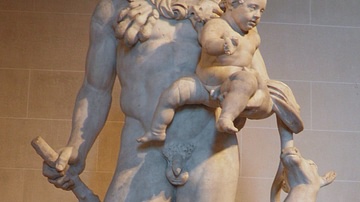
Image
Hercules and Telephus
Hercules and his son Telephus, 1st–2nd century CE, discovered in Tivoli (east of Rome), Italy. (Louvre Museum) This Roman copy appears to be based on a type of Hercules attested in Greek sculpture as early as the second half of the 4th century...
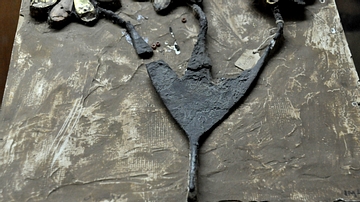
Image
Partial Headdress
This headdress was made of silver and inlaid with gold, lapis lazuli, and other precious stones. It was found in one of the royal cemeteries at Ur and belonged to one of queen/princess Pu'Abi's female attendants. Early dynastic period, c...
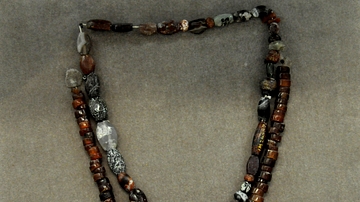
Image
Necklaces from Uruk Period
These two necklaces were made of red agate and were found inside a grave that dates back to the Uruk period, 4000-3100 BCE, Mesopotamia, Iraq. (The Sulaimaniya Museum, Iraq).
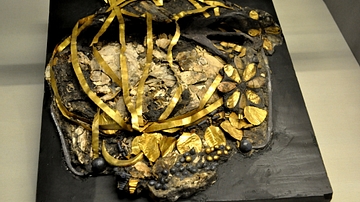
Image
Crushed Skull and Headdress from Ur
This crushed skull and its surrounding elaborate headdress was excavated (en bloc) from one of the royal cemeteries at Ur, the Great Death-Pit. This is a head of one of queen/princess Pu'Abi's female attendants. Early dynastic period, circa...
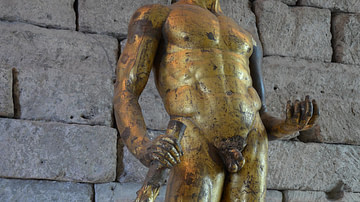
Image
Statue of Hercules
Gilded bronze statue of Hercules discovered on the site of the Forum Boarium in Rome. Hercules is holding his club and an apple of the Hesperides. 2nd century BCE. (Musei Capitolini, Rome)
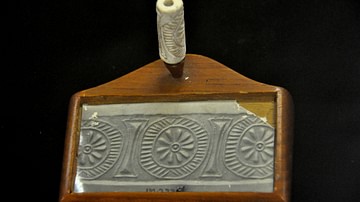
Image
Cylinder Seal from Kish
This is a cylinder seal with an image of its impression. It was found at Kish city, Mesopotamia, Iraq. 3200-2900 BCE. (The Sulaimaniya Museum, Iraq).
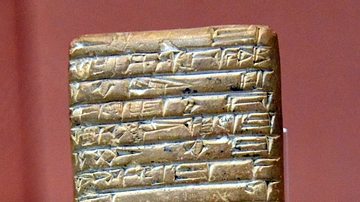
Image
Letter from Ishkun-Dagan
The cuneiform inscriptions (in the old Akkadian language) on this clay tablet mention "Gutians" as invaders of the Akkadian Empire. The tablet was donated to the British Museum by Dr. N. Corkill in 1930 CE. The site and date of excavation...
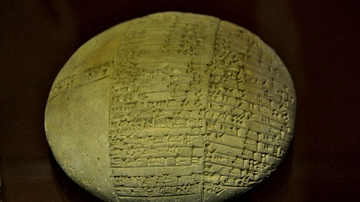
Image
Tablet with Survey of Barley Yields
This clay tablet mentions a survey of eleven fields with their dimensions and barley yields. Neo-Sumerian period, 2039 BCE, year eight in the reign of King Amar-Suen of Ur. From Mesopotamian, Iraq. (The British Museum, London).
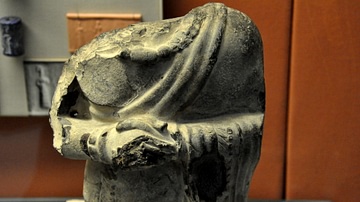
Image
Male Torso Sculpture from Sippar
A male torso from a stone votive statue. From Sippar, 2100-1900 BCE. (The British Museum, London).